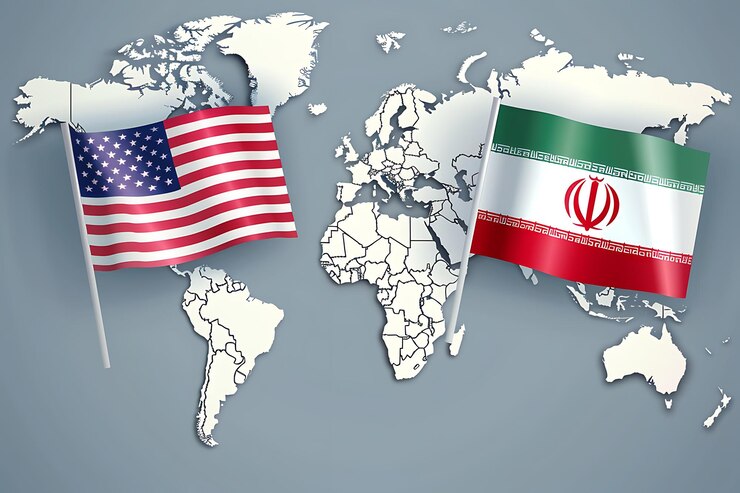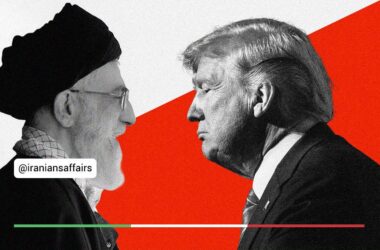The isolationist and dangerous ideology of the Islamic Republic has not only caused severe economic and social harm to the Iranian people but has also significantly weakened its military capabilities. In the absence of an air force, a navy, and adequate air defense systems, the Islamic Republic has, over the past few decades, focused on expanding its missile and drone capabilities. It has coupled this military power with the establishment of allied armed groups in Iraq, Lebanon, Syria, Afghanistan, Yemen, and Palestine to maintain its image as a regional power.
However, the old order could not endure after October 7th, and what was once called “deterrence” may no longer hold its previous meaning. The past year’s developments and the significant blows Israel has inflicted on Hezbollah have diminished the seriousness of these groups, which once formed a “ring of fire” with the Islamic Republic. Syria is normalizing relations with the Arab world and rejoining the Arab League. Iraq has chosen a different path for itself. As the wars on Israel’s southern and northern fronts conclude, Yemen’s fate may also soon be determined. The Islamic Republic, more isolated and reliant on its missile capabilities, still speaks of deterrence. Yet, the April and October 1st attacks by the Islamic Republic appear more like invitations for further strikes against itself than efforts to force Israel into concessions. Fears of a missile strike by the Islamic Republic on Arab nations may be more akin to a desperate act rather than a display of deterrence.
October 7th and the ongoing events in Lebanon, along with Israel’s continuous and likely sustained responses to the Islamic Republic, highlight the collapse of deterrence. It seems improbable that the Islamic Republic will achieve nuclear weapons capability. The monitoring and heightened awareness prevent such an outcome. Even though the West’s new doctrine places the Islamic Republic alongside Russia, China, and North Korea as part of an “axis of chaos,” it is unlikely they will offer meaningful assistance under these conditions. Perhaps we have reached the end of the Islamic Republic’s deterrence era, a point where it must choose between war and change.
The concept of deterrence has been under increased scrutiny in recent months, pointing more to an ongoing hostility rather than a conducive environment for development, peace, and prosperity. Historically, this concept is rooted in the Cold War era’s military and nuclear deterrence policies between the Western liberal order led by the United States and the Eastern communist bloc led by the Soviet Union. The development of military-oriented nuclear programs and intercontinental missile projects were hallmarks of the deterrence strategy. Both the U.S. and the Soviet Union engaged in extensive political, economic, and military activities to establish allied states. Ultimately, the Soviet Union, plagued by a destructive ideology and a long history of atrocities (especially the grim Stalinist era), failed and collapsed. However, the deterrence policies on both sides had a lasting impact on global order and prevented desired political changes.
Deterrence strategies have also emerged between nations like India and Pakistan, leading to the development of their military and nuclear programs. After nearly a decade of hard-fought wars with Arab countries, Israel, too, adopted deterrence policies. Other limited or extensive deterrence policies have been observed worldwide, with variations like Japan and South Korea forming solid alliances with the Western liberal order. Some Arab nations have also pursued similar strategies, inspired by the Japan and South Korea model.
Deterrence policy is generally linked to territorial threats and hostilities, as seen in the formation of the Northern Alliance (NATO) and the concept of the Central Treaty Organization (CENTO) as defenses against territorial aggression. Later, the scope of deterrence expanded to include protection against non-territorial threats, such as transit insecurity and disruptions in key energy activities.
This policy is deemed necessary in the face of definitive hostility but loses relevance once hostilities end, meaning peace treaties and cooperation negate the need for deterrence. Yet, a fundamental question remains: why do deterrence policies persist in regions without active territorial threats? Or why isn’t there more effort to implement the necessary changes to end long-standing conflicts, especially when they are non-territorial in nature?
These questions become more pressing with the failure of deterrence policies in the Middle East. It is evident that the escalation of deterrence among hostile regional countries has brought them closer to large-scale wars rather than pushing the shadow of conflict further away. Such wars would only deprive the people of this region of welfare, peace, and happiness.
Therefore, it may be time to reconsider why containment still holds such priority for the Western order (and the global order). While everyone in this region views the Islamic Republic as the primary, if not the only, source of insecurity and conflict, why hasn’t the policy of change been pursued instead? Admittedly, policies aimed at change—whether in the regime itself or its behavior—face numerous challenges in the Middle East. Yet, these challenges may become surmountable with a necessary and final shift in the region.
With the collapse of the Islamic Republic’s military deterrence, Israel and perhaps the Gulf Arab states must seriously address this issue and declare the failure of Western containment policies in this region. A failure whose consequences may not remain confined to this area. With the election of a new U.S. president and the shifting global order following Russia’s invasion of Ukraine and the events of October 7th, perhaps the time has come to replace the failed policy of containment with a policy of change.







